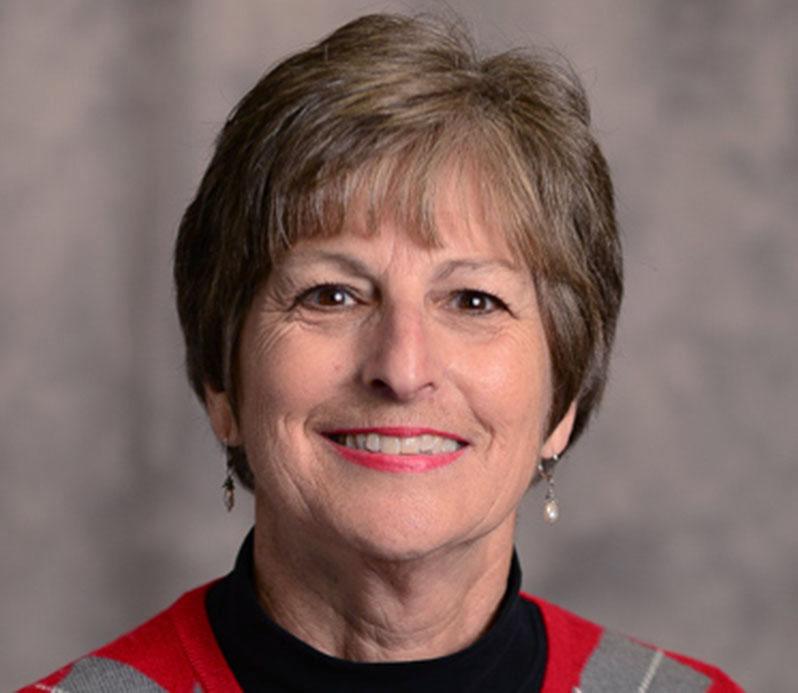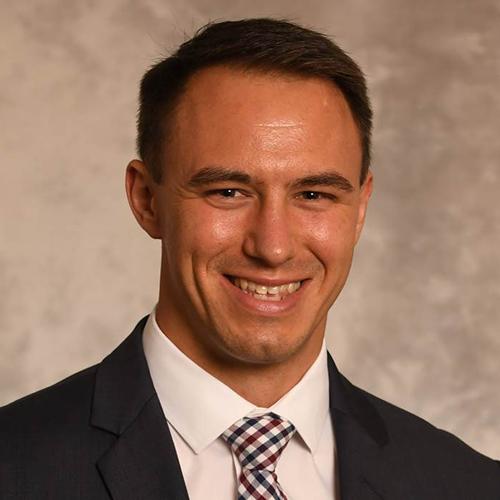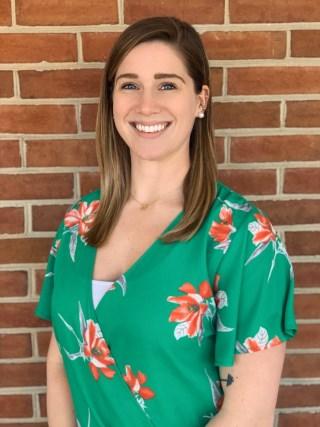
About Us
Salisbury University has a long history of using simulation as a tool to teach health professions students, but, prior to 2011, simulation experiences were scattered throughout campus. In December of 2011, the Richard A. Henson Medical Simulation Center opened its doors, creating a collaborative, multidisciplinary learning facility.
In the Center, learners have the opportunity to care for patients with a wide variety of disease conditions, illnesses, and injuries through the use of high-fidelity patient simulators (technologically advanced manikins) and standardized patients (highly trained actors). The experience, in combination with structured debriefing sessions and the opportunity to review the encounter via video and audio recordings, offers learners a rich educational experience.
-
Mission
The mission of the Richard A. Henson Medical Simulation Center is to provide education, promote quality and patient safety, stimulate research and scholarship, and integrate evidence into clinical practice through the provision of invaluable simulation experiences for Salisbury University health professions students and our healthcare professionals.
-
Vision
The Richard A. Henson Medical Simulation Center strives to be the regional leader in simulation enhanced healthcare education.
-
Goals
Education
- Provide state of the science education for health professions students at Salisbury
University. - Create opportunities for interdisciplinary education focusing on the development of
interprofessional teamwork. - Develop faculty expertise in the art and science of simulation pedagogy.
Research and Scholarship
- Support medical simulation research and scholarship.
- Pursue pertinent research opportunities.
- Promote staff and faculty proficiency with simulation technology and delivery.
Public Relations and Outreach
- Increase Salisbury University’s ability to offer continuing medical education and nationally
standardized courses to practicing health professionals in the community - Offer opportunities for community groups to learn about the use of simulation in
healthcare education.
Administration and Finance
- Maintain an operational budget to support the activities of the simulation center
- Assure appropriate administrative oversight and support.
- Pursue fundraising and resource development to minimize reliance on grant sources.
- Seek and prepare for international simulation center accreditation
- Provide state of the science education for health professions students at Salisbury
-
Kevin R. Glover, M.Ed., M.Sc., Ph.D., CHSE® - Director
 Dr. Kevin Glover has deep experience in the design, development, implementation, and testing of simulation-based clinical education solutions which result in measurable performance improvement. His simulation-based education outcomes research has been published in peer-reviewed journals such as, Simulation & Gaming, the Journal of Infusion Nursing, TechTrends, the Journal for Continuing Education in Nursing, and Simulation in Healthcare.
Dr. Kevin Glover has deep experience in the design, development, implementation, and testing of simulation-based clinical education solutions which result in measurable performance improvement. His simulation-based education outcomes research has been published in peer-reviewed journals such as, Simulation & Gaming, the Journal of Infusion Nursing, TechTrends, the Journal for Continuing Education in Nursing, and Simulation in Healthcare.Dr. Glover holds two advanced degrees focused on simulation-based learning, a Master of Science in Instructional Technology, and a PHD in Teaching, Learning, and Technology. His doctoral research was focused on the development and testing of a simulation-based game with 12th grade emerging health professional students at the Lehigh Career and Technical Institute.
Dr. Glover has been an active member of the Society for Simulation in Healthcare since 2010, and he is a Certified Healthcare Simulation Educator (CHSE). He currently serves as a peer reviewer for two medical education journals, Simulation & Gaming, and Medical Internet Research / Serious Games.
[+/-] - Publications in Peer Reviewed Journals- Glover, K. R. & Bodzin, A. (2021). Learner-centric Design of a Hand Hygiene Serious Simulation Game for 12th Grade Emerging Health Professional Students. TechTrends. 65(10), 379-393. https://link.springer.com/article/10.1007/s11528-020-00577-2
- Glover, K. R. & Bodzin, A. (2020). Convergent Validity Testing of a Value-Achievement-Cost Motivation Survey for 12th Grade Female Career and Technical Education Health Sciences Students for Use in Serious Simulation Games. Career and Technical Education Research, 45(2), 39-58. https://www.ingentaconnect.com/content/acter/cter/2020/00000045/00000002/art00005;jsessionid=3s5dogfjn1g25.x-ic-live-01
- Glover, K. R. & Bodzin, A. (2020). Learner Analysis to Inform the Design and Development of a Serious Game for Non-Gaming Female Emerging Healthcare Pre-professionals. JMIR Serious Games. 8(1): e16003. doi:10.2196/16003. PMID: 32027312
- Glover, K. R. & Bodzin, A. (2019). Psychometric testing of a value-achievement-cost motivation survey for 12th Grade Health Sciences Students for Use in Simulation-Based-Games. Simulation & Gaming, 50(6), 789 –811. https//doi.org/10.1177/1046878119876317
- Glover, K. R., Vitoux, R., & Schuster, C. Types and Frequency of Infusion Pump Alarms: Protocol for a Retrospective Data Analysis. JMIR Research Protocols 2018;7(6): e10446. URL: http://www.researchprotocols.org/2018/6/e10446/ doi:10.2196/10446 PMID:29903696
- Vitoux, R., Schuster, C., Dekker, M., & Glover, K.R. (2018) Frequency and Duration of Infusion pump Alarms: Establishing National Benchmarks. Biomedical Instrumentation & Technology, 52(6), 433-441. https://doi.org/10.2345/0899-8205-52.6.433
- Vitoux, R., Schuster, C., & Glover, K. R. (2018). Perceptions of Infusion Pump Alarms: Insights gained from critical care nurses. Journal of Infusion Nursing, 41(5), 309-318. URL: https://journals.lww.com/journalofinfusionnursing/Fulltext/2018/09000/Perceptions_of_Infusion_Pump_Alarms__Insights.6.aspx
- Vitoux, R., Schuster, C., Dekker, M., & Glover, K. R. (2018). Incidence and Characteristics of Infusion Pump Alarms. J Journal of Infusion Nursing, 41(5), 281-282
- Glover, K. R., Stahl, B. R., Murray, C. L., LeClair, M. W., Gallucci, S., King, M. A., Labrozzi, L. J., Schuster, C. A., & Keleekai, N. (2017). A Simulation-Based Blended Curriculum for Short Peripheral IV Catheter Insertion: An Industry-Practice Collaboration. Journal for Continuing Education in Nursing, 48, 397-406. https://doi.org/10.3928/00220124-20170816-05
- Keleekai, N., Schuster, C.A., Murray, C. L., King, M. A., Stahl, B. R., Labrozzi, L. J., Gallucci, S., LeClair, M. W., & Glover, K. R. (2016). Improving nurses’ peripheral intravenous catheter insertion knowledge, confidence and skills using a simulation-based, blended learning program: a randomized trial. Simulation in Healthcare.11, 376-384. https://journals.lww.com/simulationinhealthcare/Fulltext/2016/12000/Improving_Nurses__Peripheral_Intravenous_Catheter.2.aspx
- Schuster, C., Stahl, B., Murray, C., Keleekai, N. L., & Glover, K. R. (2016). Development and testing of a short peripheral IV catheter insertion skills checklist. Journal of the Association for Vascular Access. 21(4), 196-204. https://doi.org/10.1016/j.java.2016.08.003
- Schuster C, Stahl B, Murray C, Glover K. R. (2016) Development and testing of an instrument to measure peripheral intravenous catheter insertion confidence. Journal of Infusion Nursing, 39(3), 159-165. https://journals.lww.com/journalofinfusionnursing/Abstract/2016/05000/Development_and_Testing_of_an_Instrument_to.5.aspx
[+/-] - Book Chapters- Parampreet, K., Rickard, C., Domer, G. S. & Glover, K. R. (Online: February 9, 2019). Dangers of Peripheral Intravenous Catheterization: The Forgotten Tourniquet and Other Patient Safety Considerations. In Vignettes in Patient Safety (Volume 4). DOI: 10.5772/intechopen.83854
- Glover, K. R. (2014). Medical simulation. In K. Kapp, “The gamification of learning and instruction field book; theory into practice.” (Chapter 20, pp. 371-390). San Francisco, CA. John Wiley and Sons.
[+/-] - Presentations at Regional, National and International Conferences- Glover, K. R. & Bodzin, A. (January 19, 2020). Psychometric testing of a value-achievement-cost motivation survey for 12th grade emerging health professional students. Poster session presented at the International Meeting for Simulation in Healthcare. San Diego, CA. DOI: 10.13140/RG.2.2.32375.16801
- Schuster, C., & Glover, K. R. (2019). The Interaction between Ostomy Product and Person- A preliminary look at physical state, product experience, and quality of life (QOL). Journal of Wound Ostomy & Continence Nursing, 46, S1–S70. doi:10.1097/WON.0000000000000530
- LeClair, M, Schuster, C., Stahl, B., Murray, C., & Glover, K. R. (2016). Clinician Acceptability and Perceived Benefits of a Comprehensive Fundamentals of Peripheral IV Access eLearning Program. Canadian Vascular Access Association Annual Conference. Poster presentation. April 27-29. Vancouver, BC.
- Stahl B., Murray, C., Schuster C., & Glover K. R. (2015) Development, Validation and Use of a Nurse PIVC insertion Skills Checklist. Infusion Nursing Society Annual Conference. Poster presentation. May 18-20. Louisville, KY.
- Glover, K. R. (2015). A new era in healthcare. A teaching hospital and a medical device company conducting randomized educational outcomes research as equal partners, at Association for Vascular Access Annual Scientific Meeting. Grapevine, TX. September.
- Keleekai N., Schuster C. A., Murray C. L., King M.A., Stahl B. R., Labrozzi L. J., Gallucci S., LeClair M. W., & Glover K. R. (2015) Improving nurses’ peripheral intravenous catheter insertion knowledge, confidence and skills using a simulation-based, blended learning program: a randomized trial. Simulation in Healthcare, 10(6);452-453
- Murray C., Stahl B., Schuster, C, & Glover K. R. (2014) Validity & Reliability of a Peripheral Intravenous Catheter (PIVC) Insertion Skills Checklist. 15th International Meeting on Simulation in Healthcare. Poster presentation. January 12. New Orleans, LA.
- Glover, K. R. (2013). Patient and product outcomes: Product in-service education after the sale is no longer enough to remain relevant in this new era of healthcare reform. Keynote presentation given at the 2nd Annual Medical Device & Diagnostic Sales Training Summit. Indianapolis, ID. October.
- Glover, K. R. (2012). Beyond simulation based, mastery learning: Placed-based e-guided instruction. Keynote presentation given at the 1st Annual Medical Device & Diagnostic Sales Training Summit. Princeton, NJ. October.
- Glover, K. R. (2011). Maximizing sales force effectiveness with a simulation-based mastery training methodology. Keynote presentation given at the 2nd Annual Q1 Device & Diagnostic Sales Training & Development Conference. Dallas, Texas. March.
- Glover, K. R. (2010). Maximizing sales force effectiveness through training and development. Keynote presentation given at National Home Infusion Association Annual Conference. Dallas, Texas. February.
-
Dr. Lisa Seldomridge, PhD, RN, CNE - Founding Director
 Dr. Lisa Seldomridge, Founding Director, is an experienced nurse educator and leader with expertise in developing simulations using high fidelity manikins and standardized patient actors. She authored the original grant in 2009 that helped establish the Simulation Center and has been part of the administrative team since the Center opened in December 2011. Named Founding Director in 2018, she also served for thirteen years as Chair of the Department of Nursing at Salisbury University and Director of Graduate and Second-Degree Nursing Programs for three. With a clinical specialty in adult health, she has practiced nursing in hospitals and home health settings.
Dr. Lisa Seldomridge, Founding Director, is an experienced nurse educator and leader with expertise in developing simulations using high fidelity manikins and standardized patient actors. She authored the original grant in 2009 that helped establish the Simulation Center and has been part of the administrative team since the Center opened in December 2011. Named Founding Director in 2018, she also served for thirteen years as Chair of the Department of Nursing at Salisbury University and Director of Graduate and Second-Degree Nursing Programs for three. With a clinical specialty in adult health, she has practiced nursing in hospitals and home health settings.Seldomridge is also well-known for her efforts to develop solutions to the nurse educator shortage including the MHEC-NSP II funded Faculty Academy and Mentorship Initiative of Maryland (F AMI), LeadNursingForward.org - an informational website and searchable career portal, Nursing Toolkits for Leadership Skills Development, and the Eastern Shore-Western Shore Faculty Initiative-A Statewide Needs Assessment. Since 2009, she has raised nearly $15 million in grants from the Maryland Hospital Association, Maryland Higher Education Nurse Support-II Program, and Robert Wood Johnson Foundation.
Areas of research include using standardized patients and simulations to foster critical thinking and clinical judgment, development of experienced clinicians as nursing faculty, attracting students to the professoriate, and solutions to address reduce grade inflation in clinical evaluation. Her research has been published and presented at national and international conferences.
Dr. Seldomridge is a 2021 recipient of an MHEC-NSP-II Nurse Faculty Annual Recognition award, given to experienced nursing faculty for demonstrated excellence. She is a two-time recipient of Salisbury University’s Distinguished Faculty Award, and the University System of Maryland "Outstanding Faculty Award" in 2014. Since is reviewer for Journal of Nursing Education, Nurse Educator, Journal of Professional Nursing, and Nurse Education in Practice, and as a program reviewer for the Commission on Collegiate Nursing Education.
She holds memberships in the Society for Simulation in Healthcare (SSH), and the Association for Standardized Patient Educators (ASPE), and has completed the Maryland Clinical Simulation Resource Consortium’s Simulation Education Leader (SEL) program. She holds a PhD from the University of Maryland and is a National League for Nursing Certified Academic Nurse Educator. Dr. Seldomridge uses her expertise in simulation to assist colleagues at SU and throughout Maryland with development, implementation and evaluation of simulation experiences in accordance with evidence-based standards.
-
Zackery Tyndall, MBA, Paramedic - Simulation Technologies Program Coordinator
 Zackery Tyndall began working in the Emergency Medical Services (EMS) field in 2006 as an Emergency Medical Technician (EMT) and obtained his paramedic certification and license through Chesapeake College and an Associate of Applied Science in Emergency Medical Services from Wor-Wic Community College. Zackery was previously employed with the Berlin and Ocean City Fire Departments. He served on the Water Rescue Team and directed medical teams as an EMS Lieutenant.
Zackery Tyndall began working in the Emergency Medical Services (EMS) field in 2006 as an Emergency Medical Technician (EMT) and obtained his paramedic certification and license through Chesapeake College and an Associate of Applied Science in Emergency Medical Services from Wor-Wic Community College. Zackery was previously employed with the Berlin and Ocean City Fire Departments. He served on the Water Rescue Team and directed medical teams as an EMS Lieutenant.As a Simulation Coordinator, Zackery helps create and deliver realistic medical simulations for a wide range of medical professionals using high-fidelity patient simulators, standardized patients, and advanced technology. Zackery also teaches continuing education courses to internal and external users utilizing the American Heart Association’s (AHA) curriculum.
In addition to Zackery’s medical experience, he earned a Master of Business Administration (MBA) from Salisbury University’s Perdue School of Business. Zackery also serves as Mayor of the Town of Berlin, Maryland. Through this position, he is an active member of the Maryland Municipal League (MML), Maryland Mayors Association (MMA), Executive Board Member on the Rural Maryland Council (RMC), and a Council Member of the Tri-County Council for the Lower Eastern Shore of Maryland.
-
Rachel Prestridge, MS - Standardized Patient Coordinator
 Rachel Prestridge is a two time graduate of Salisbury University. She holds a Master of Science degree in Applied Health Physiology as well as a Bachelor of Science degree in Exercise Science. Her employment at the Simulation Center began in 2016, when she was appointed as the Graduate Assistant for the Applied Health Physiology program at SU. During her two years as a Graduate Assistant, part of Rachel’s time was spent assisting in the process of the AHPH program seeking accreditation. She also supported human research and spent half of her time devoted to supporting the activities of the Simulation Center. After graduation, Rachel remained on staff at the Simulation Center as a part-time Simulation Technician. She has since transitioned into the role of the Standardized Patient Program Coordinator, a new position to the Sim Center as of July 2020. In this role, Rachel manages the Standardized Patient program by coordinating all Standardized Patient events and overseeing the Standardized Patient staff.
Rachel Prestridge is a two time graduate of Salisbury University. She holds a Master of Science degree in Applied Health Physiology as well as a Bachelor of Science degree in Exercise Science. Her employment at the Simulation Center began in 2016, when she was appointed as the Graduate Assistant for the Applied Health Physiology program at SU. During her two years as a Graduate Assistant, part of Rachel’s time was spent assisting in the process of the AHPH program seeking accreditation. She also supported human research and spent half of her time devoted to supporting the activities of the Simulation Center. After graduation, Rachel remained on staff at the Simulation Center as a part-time Simulation Technician. She has since transitioned into the role of the Standardized Patient Program Coordinator, a new position to the Sim Center as of July 2020. In this role, Rachel manages the Standardized Patient program by coordinating all Standardized Patient events and overseeing the Standardized Patient staff.In addition, Rachel is employed at TidalHealth as a Clinical Exercise Physiologist in the Cardiovascular and Pulmonary Rehabilitation department. She also serves as a personal trainer to a variety of clientele at a local fitness club.
-
Jody Dengler - Administrative Assistant
jwdengler will appear here